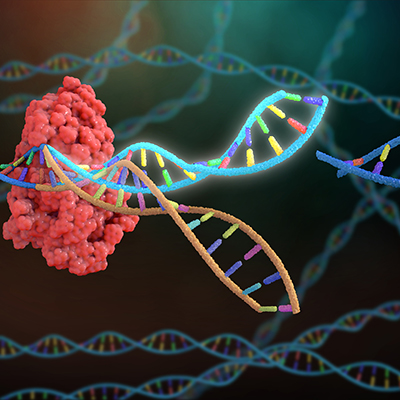July 18, 2022 -- Rice University researchers were able to use deactivated Cas9 (dCas9) proteins to target key segments of the human genome to synthetically trigger the transcription of human genes. Using dCas9 proteins, researchers have revealed important details about human promoters and enhancers -- the pieces of DNA that coordinate when, and to what extent, genes are turned on.
Results of their study were published on July 18 in the journal Nucleic Acids Research.
"Nuclease-inactivated CRISPR/Cas-based (dCas-based) systems have emerged as powerful technologies to synthetically reshape the human epigenome and gene expression. Despite the increasing adoption of these platforms, their relative potencies and mechanistic differences are incompletely characterized, particularly at human enhancer-promoter pairs," state the authors.
By synthetically activating noncoding DNA, the researchers demonstrated how promoters -- short DNA sequences that mark the start sites of genes -- and enhancers can communicate. They discovered that enhancers can be thousands of base pairs away from their promoters but can stimulate gene transcription by recruiting activator proteins and by forming direct physical contacts with associated promoters.
"Enhancers can also sometimes make mysterious transcripts called enhancer RNAs (eRNAs)," said Isaac Hilton, PhD, assistant professor of bioengineering and biosciences at Rice University who co-led the study, in a statement. "CRISPR technologies can be used to turn on these eRNAs, and that in some cases, this fosters a type of genomic tracking, wherein an enhancer can be dragged along DNA to engage with downstream promoters."
Hilton said, "It also appears that along the way, vital transcriptional and epigenetic information can be deposited."
In addition, researchers found that CRISPR activators can increase the frequency of physical contacts between enhancers and promoters, but only when targeted to an enhancer, suggesting a sort of one-way street for increasing physical contacts.
Hilton contends that the team's study highlights the growing potential of CRISPR-Cas9-based tools for synthetic gene control and cellular engineering, while demonstrating the power of dCas9 to influence and understand the epigenetic factors that affect the human genome.
"We're using these synthetic biology tools to improve the ability to engineer gene expression and program human cells, and consequently to better understand how our genes work naturally," Hilton said. "These types of studies are important because in the long run this knowledge and these technical capabilities can enable better gene and cell therapies and biotechnologies."
Copyright © 2022 scienceboard.net










